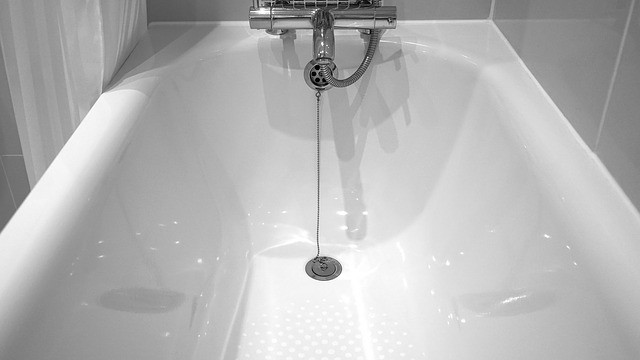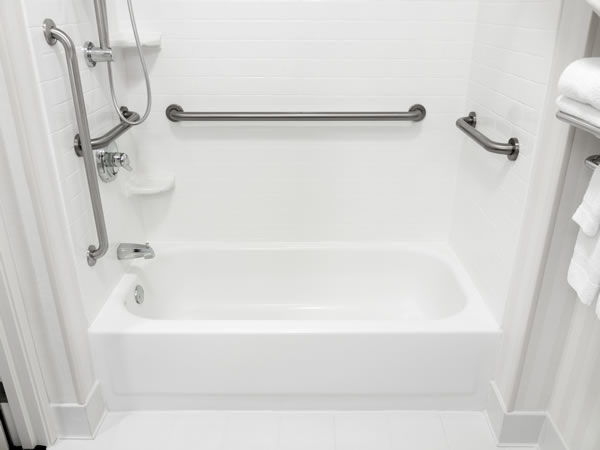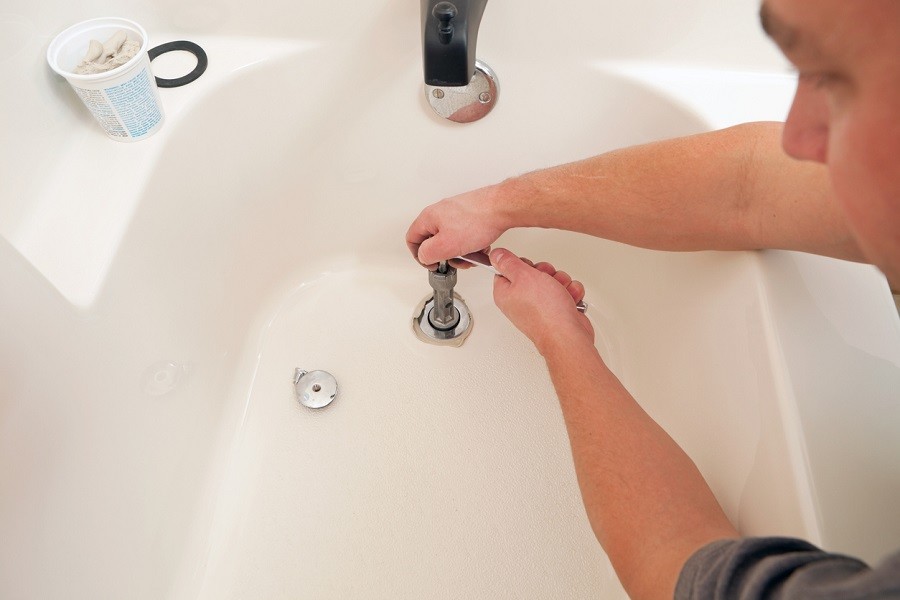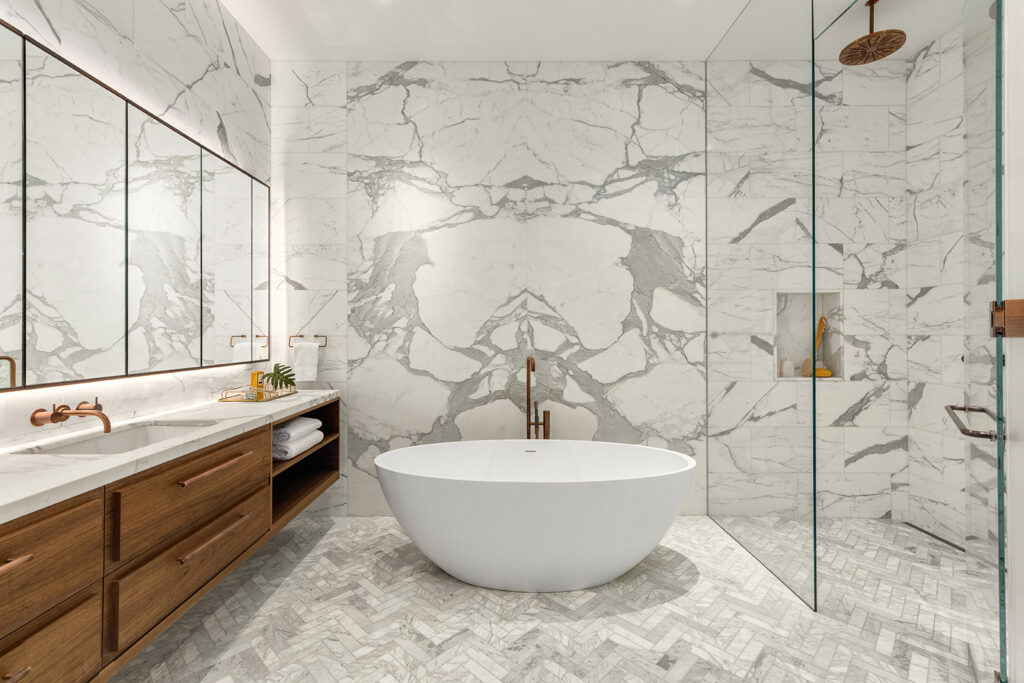
One-Piece vs Two Piece Toilet – Pros and Cons- 2025 Expert Guide
When upgrading your bathroom, one of the most important—and often overlooked—decisions is choosing between a one-piece or two-piece toilet. While
Fiberglass is made from reinforced plastic which is then molded then formed into a bathtub shape. This bathtub shape is then reinforced by a layer of gelcoat resin which protects it from scratches and light impacts. Of the bathtub materials on market, fiberglass is the cheapest and lightest in overall weight, giving it more flexibility in installation due to the relatively low cost of the material itself. This flexibility in design comes at a cost however as fiberglass is perhaps the least durable material on the market-it’s porous quality leading it to have poor heat retention as well as brittle resistance to heavy impacts as well as warping down the road.

As stated above, the positives of fiberglass bathtubs are as follows:
With the negatives being;
Fiberglass bathtubs enjoy the benefits of being the most affordable on the market, which means they are the most widely available for anyone’s budget. Also since the material is quite easy to work with and is fairly cheap, these bathtubs also enjoy a large flexibility in size, shapes and designs, allowing them to fit virtually every bathroom type, whether large or small. All of these positives come with some high negatives however as fiberglass bathtubs tend to be less durable than any other material on the market. They cannot sustain heavy impacts and are quite porous in nature, allowing water and moisture to seep into it, causing future problems such as warping and general deterioration over time. Since it is porous, heat retention is also not very high in a fiberglass bathtub, meaning your water will grow cold much more quickly, resulting in increased water usage for minimal bathing temperature.

Since it occupies the affordable spectrum, fiberglass bathtubs hold the cheapest price point when compared to other materials on market. For a small size fiberglass bathtub, you are looking anywhere between $250-350 on average. As the sizes get larger, the price will fluctuate anywhere between $350-500. On the extreme end, there are $5,000 walk-in bathtubs, which carry a multitude of helpful functions such as additional handholds and more in-depth temperature settings, though fiberglass may not be the best material for this style of bathtub long term.
Acrylic bathtubs are formed by taking vacuumed sheets of acrylic, which are then reinforced with fiberglass. They key advantage of this design is that many of the positives of fiberglass are retained while eliminating some of the negatives of fiberglass, such as the porous nature of the material. Both bathtubs are lightweight, easy to install, are flexible in design and can be repaired easily. With the acrylic reinforcement, the bathtub becomes non-porous, giving it some heat retention while repelling water from being absorbed into the material itself. The trade off is that
Acrylic bathtubs tend to be heavier, which makes it more durable to physical punishment and more resistant to scratching but also increases their price tag. Acrylic bathtubs tend to be $100 more than a fiberglass bathtub of the same size, but with the benefits of the material, the price tag is well worth it.
Cast iron bathtubs are among the best values on the market due to their durability, heat retention and aesthetic. As fiberglass bathtubs are the least durable on the market, cast iron bathtubs are considered to be the most durable, able to weather a great deal of punishment without fear of damage to the material itself. The physical durability also extends to the longevity of the material, lasting for 20+ years easily with proper maintenance whereas fiberglass bathtubs will tend to warp and chip after about 10-15 years on average. Since cast iron is a non-porous material it also has excellent heat retention, giving you warmer water over a longer period of time which is the main benefit of better bathtub material. The only negative however of a cast iron bathtub is its weight, which makes it quite difficult to install when compared to fiberglass. With it weighing nearly triple the amount of fiberglass, not every home can support cast iron so proper research is required.
With proper maintenance, a fiberglass bathtub should last typically from 10-15 years. Over time the material will absorb water and moisture, causing it to warp and disfigure over time, lowering its overall composition and causing it to become unstable. As with most bathtubs however, this process can be delayed with replacing the gelcoat or retouching the finish on the bathtub. While it may be cheaper just to replace a fiberglass tub, it is always an option if you don’t want to deal with the hassle of removing and reinstalling a new bathtub.

Proper maintenance of a fiberglass bathtub entails cleaning your bathtub surfaces, including and cracks and crevices, making sure that no excess moisture spills over. Since fiberglass cannot sustain heavy impacts, avoid dropping anything of significant weight in the bathtub, otherwise you can easily chip or scratch the finish or actual tub itself. Due to the composition of fiberglass, abrasive cleaners will stain and strip much of the protective coating of the bathtub itself so it is highly advised that you use less abrasive cleaners such as white vinegar, soap and baking soda to clean this particular bathtub. Abrasive brushes can also easily scratch this type of bathtub, so please do not use a steel wool to clean your fiberglass bathtub and instead use a soft sponge or a surface that will not add friction to your bathtub surface.
For many people, a fiberglass bathtub is a solid purchase, providing a bathtub that is inexpensive and can fit a wide variety of bathrooms. But, as discussed above, the material is not as durable when compared to other bathtub materials on the market and comes with some hefty drawbacks. So as always, do research, consider your bathing needs and the space you have available before purchasing.

Eric is the founder and president of Badeloft USA. He has been the president of Badeloft’s US division for over ten years and oversees all marketing and branding aspects of Badeloftusa.com.
His expertise lies in small business development, sales, and home and bathroom industry trends and information.
Contact us with any business related inquiries.

Free material samples and tub templates

When upgrading your bathroom, one of the most important—and often overlooked—decisions is choosing between a one-piece or two-piece toilet. While

Small details, including what you place on the floor, can make a big difference when setting up or upgrading your

Plumbing traps may seem like small components, but they are critical in keeping your home safe and odor-free. Two of
When shopping for new bath linens, the difference between a bath towel and a bath sheet can feel subtle, but
Request your free material sample below. By submitting, you agree to receive occasional product updates and offers from Badeloft. Unsubscribe anytime.
"*" indicates required fields
"*" indicates required fields
"*" indicates required fields